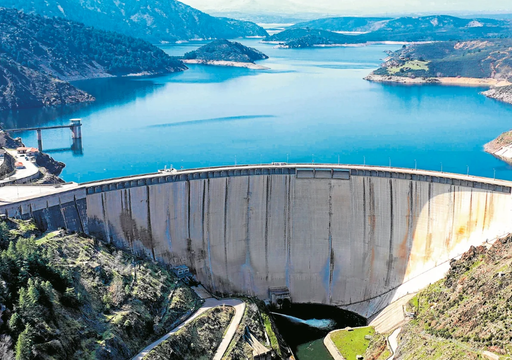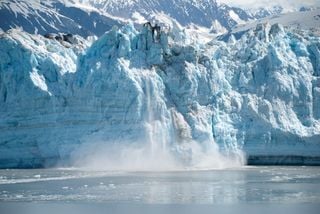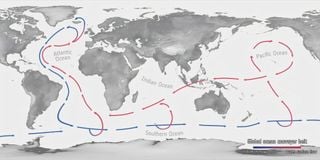Mid-Latitude Atmospheric Dynamics: A First Course, 2006.
Mid-Latitude Atmospheric Dynamics: A First Course, 2006. Jonathan E. Martin. Jhon Wiley & Sons Edt. ISBN: 0-470-86465-6. 336 pp.Estamos frente a un libro de Meteorología para estudiantes avanzados de ...
Mid-Latitude Atmospheric Dynamics: A First Course, 2006. Jonathan E. Martin. Jhon Wiley & Sons Edt. ISBN: 0-470-86465-6. 336 pp.
Estamos frente a un libro de Meteorología para estudiantes avanzados de estas ciencias en sus primeros años de carrera. El libro está muy bien estructurado con bastantes graficas, tablas, problemas y soluciones. Analizando el índice de materias, ya se observa que el autor que toca los temas básicos de esta ciencia. La lectura de los capítulos nos adentra a unas materias donde el autor muestra sus dotes y capacidades de enseñante, que ha venido desempeñando en la Universidad de Wisconsin.
Como indica el título, el libro está orientado a la dinámica de perturbaciones de latitudes medias. Por dicho motivo, las borrascas, anticiclones, frentes, teoría cuasigeostrófica, etc., ocupan la parte central y fundamental del libro. No podrían faltar algunas consideraciones básicas y elementales sobre el concepto de Vorticidad Potencial aplicadas a latitudes media, principio de invertibilidad, efectos diabáticos, etc. Las figuras y modelos conceptuales que se aprecian en este último capítulo son fiel reflejo de la seriedad y eficiencia de este libro.
Jonathan E. Martin es profesor en el Departamento de Ciencias de la Atmósfera y Océano en la Universidad de Wisconsin-Madison donde ha enseñado desde 1994. Ha recibido numerosos premios por sus enseñanzas como Underkofler Excellence in Teaching Award y es miembro de Teaching Academy of the University of Wisconsin. El es además experto investigador en sistemas atmosféricos de latitudes medias. El profesor Martin ha publicado numerosos artículos en revistas científicas y fue galardonado con la distinción Mark H. Ingraham Distinguished Faculty Member by the College of Letters and Science at UW-Madison.
| Description | Preface. |
| Table of Contents | Acknowledgments. |
| Author Information |
1. Introduction and Review of Mathematical Tools.
Objectives.
1.1 Fluids and the nature of fluid dynamics.
1.2 Review of useful mathematical tools.
1.2.1 Elements of vector calculus.
1.2.2 The Taylor series expansion.
1.2.3 Centred difference approximations to derivatives.
1.2.4 Temporal changes of a continuous variable.
1.3 Estimating with scale analysis.
1.4 Basic kinematics of fluids.
1.4.1 Pure vorticity.
1.4.2 Pure divergence.
1.4.3 Pure stretching deformation.
1.4.4 Pure shearing deformation.
1.5 Mensuration.
Selected references.
Problems.
Solutions.
2. Fundamental and Apparent Forces.
Objectives.
2.1 The fundamental forces.
2.1.1 The pressure gradient force.
2.1.2 The gravitational force.
2.1.3 The frictional force.
2.2 Apparent forces.
2.2.1 The centrifugal force.
2.2.2 The Coriolis force.
Selected references.
Problems.
Solutions.
3. Mass, Momentum, and Energy: The Fundamental Quantities of the Physical World.
Objectives.
3.1 Mass in the Atmosphere.
3.1.1 The hypsometric equation.
3.2 Conservation of momentum: The equations of motion.
3.2.1 The equations of motion in spherical coordinates.
3.2.2 Conservation of mass.
3.3 Conservation of energy: The energy equation.
Selected references.
Problems.
Solutions.
4. Applications of the Equations of Motion.
Objectives.
4.1 Pressure as a vertical coordinate.
4.2 Potential temperature as a vertical coordinate.
4.3 The thermal wind balance.
4.4 Natural coordinates and balanced flows.
4.4.1 Geostrophic flow.
4.4.2 Inertial flow.
4.4.3 Cyclostrophic flow.
4.4.4 Gradient flow.
4.5 The relationship between trajectories and streamlines.
Selected references.
Problems.
Solutions.
5. Circulation, Vorticity, and Divergence.
Objectives.
5.1 The Circulation theorem and its physical interpretation.
5.2 Vorticity and potential vorticity.
5.3 The relationship between vorticity and divergence.
5.4 The quasi-geostrophic system of equations.
Selected references.
Problems.
Solutions.
6. The Diagnosis of Mid-Latitude Synoptic-Scale Vertical Motions.
Objectives.
6.1 The nature of the ageostrophic wind: Isolating the acceleration vector.
6.1.1 Sutcliffe’s expression for net ageostrophic divergence in a column.
6.1.2 Another perspective on the ageostrophic wind.
6.2 The Sutcliffe development theorem.
6.3 The quasi-geostrophic omega equation.
6.4 The Q_-vector.
6.4.1 The geostrophic pradox and its resolution.
6.4.2 A natural coordinate version of the _Q-vector.
6.4.3 The along- and across-isentrope components of _Q.
Selected references.
Problems.
Solutions.
7. The Vertical Circulation at Fronts.
Objectives.
7.1 The structural and dynamical characteristics of mid-latitude fronts.
7.2 Frontogenesis and vertical motions.
7.3 The semi-geostrophic equations.
7.4 Upper-level frontogenesis.
7.5 Precipitation processes at fronts.
Selected references.
Problems.
Solutions.
8. Dynamical Aspects of the Life Cycle of the Mid-Latitude Cyclone.
Objectives.
8.1 Introduction: The polar front theory of cyclones.
8.2 Basic structural and energetic characteristics of the cyclone.
8.3 The cyclogenesis stage: The QG tendency equation perspective.
8.4 The cyclogenesis stage: The QG omega equation perspective.
8.5 The cyclogenetic influence of diabatic processes: Explosive cyclogenesis.
8.6 The post-mature stage: Characteristic thermal structure.
8.7 The post-mature stage: The QG dynamics of the occluded quadrant.
8.8 The Decay Stage.
Selected references.
Problems.
Solutions.
9. Potential Vorticity and Applications to Mid-Latitude Weather Systems.
Objectives.
9.1 Potential vorticity and isentropic divergence.
9.2 Characteristics of a positive PV anomaly.
9.3 Cyclogenesis from the PV perspective.
9.4 The influence of diabatic heating on PV.
9.5 Additional applications of the PV perspective.
9.5.1 Piecewise PV inversion and some applications.
9.5.2 A PV perspective on occlusion.
9.5.3 A PV perspective on leeside cyclogenesis.
9.5.4 The effects of PV superposition and attenuation.
Selected references.
Problems.
Solutions.
Appendix A: Virtual Temperature.
Bibliography.
Index.








